How to Get to Torres del Paine + 20 Other FAQs to Plan Your Trip

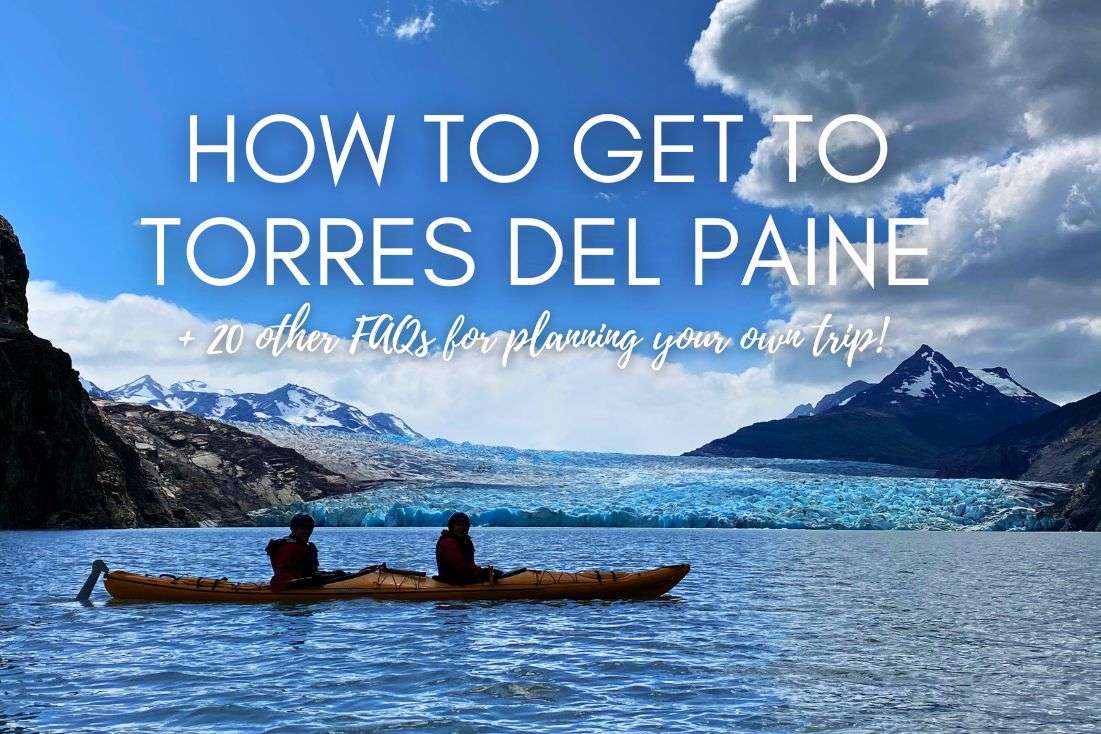
I had the time of my life in Torres del Paine National Park, and now I want to share my experience with you to help you have a similarly awesome time there. I mean, it’s not hard—Patagonia is phenomenal! But ironing out the logistical headaches beforehand is one less thing to worry about, so you can focus on more important things, like pretending you’re a rugged but good-looking adventurer in your Instagram photos.
This article is a practical travel guide to Torres del Paine where you’ll learn everything you need to know before you go: how to get to Torres del Paine from different cities, how to use the park bus (but a car is better!), why you need tickets ahead of time, and many more FAQs that’ll come in handy if it’s your first time there.
Tip: I’ll give you a quick rundown of things to do in Torres del Paine here as well, but you’ll want to head over to my other article for a full-blown guide to Torres del Paine’s hiking and activities.

1. Facts about Torres del Paine National Park:
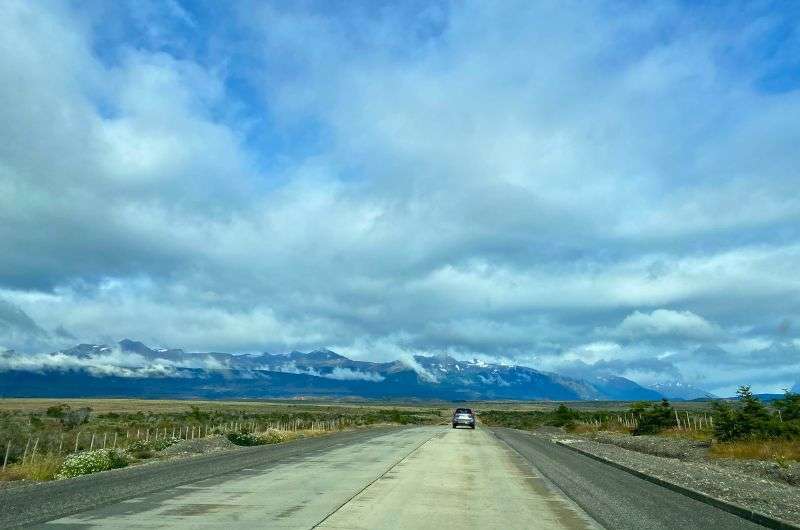
Let’s head to the Southern Patagonia in Chile!
- Location: Southern Chilean Patagonia
- Best time to visit: November to February are the most popular months
- Getting there: Fly into Puerto Natales (much closer) or Punta Arenas (more frequent flights), then take a bus or car into the national park
- Park entry fee 2024: USD 33 for up to 3 days, USD 47 for longer. Purchase tickets online in advance!
- How to get around: Park buses, private shuttles, or rental cars
- Top activities: Hiking, viewpoints, kayaking to Grey Glacier, boat trips
- Accommodation: A hotel in Puerto Natales is best, but the national park offers campsites, refugios, and hotels too
- Weather: Unpredictable, with strong winds and sudden rain, so pack layers!
- What to bring: Waterproof gear, sturdy shoes, cash, sunscreen and sunglasses
- Difficulty level: Ranges from easy walks to challenging multi-day treks
2. Where is Torres del Paine National Park?
Torres del Paine National Park is located in the southern part of Chilean Patagonia, about 112 km (70 mi) north of Puerto Natales and roughly 312 km (194 mi) northwest of Punta Arenas. To give you a sense of the distance, it’s about 3,100 km (1,926 mi) south of Santiago, the capital of Chile—hence why most travelers opt to fly. But sure, you can also drive for 30 hours, up to you.
Tip: If you’re up for an extra-large Patagonia adventure, here’s a decision to make: Add Los Glaciares National Park in Argentina to your itinerary. It's home to the famous Perito Moreno Glacier and the hiking paradise of El Chaltén, and it’s just 300 km (186 miles) northeast of Torres del Paine. Despite being in different countries, these parks are close enough to explore in one epic trip. Get my 7-day El Chaltén itinerary
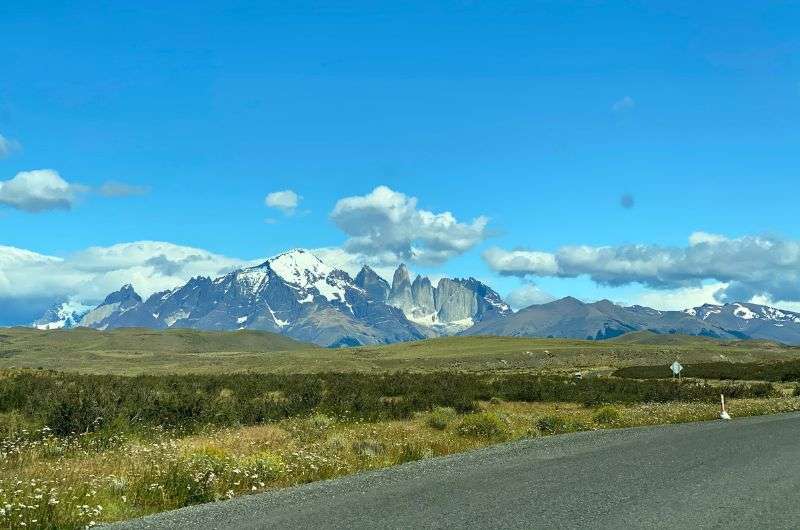
A long journey, but well worth it
3. What is the closest airport to Torres del Paine? Punta Natales (sometimes!)
The closest major airport to Torres del Paine is Punta Arenas International Airport (PUQ). It has non-stop flights from Santiago and several other cities daily. From Punta Arenas, it’s about a 3–4-hour drive or bus ride to Puerto Natales, the main gateway to the park. Puerto Natales also has a smaller airport, Teniente Julio Gallardo Airport (PNT). It operates seasonally from October to March, with direct flights from Santiago and Puerto Montt (though not daily). If you can snag a direct flight to Puerto Natales, it’s the most convenient option, with just a short drive to the park.
Tip: For my trip, I flew from Puerto Montt to Punta Arenas—see how in my whirlwind 3-week Chile itinerary. If you’re planning a similar adventure, check it out for logistics tips, because trust me, there’s a lot of driving and flying around in this super-long and narrow country!

4. Torres del Paine entrance fee in 2024 is USD 33–47
The cost of tickets for Torres del Pain depends on how long you intend to stay in the national park:
- Ticket for up to 3 days: CLP 31, 200 CLP (USD 33) for adults 18+, CLP 16,000 (USD 17) for children 12+
- Ticket for more than 3 days: CLP 44,500 CLP (USD 47) for both adults and children 12 years and older
(I’m using September 2024 currency conversion rates for the USD amounts.)
Sometimes, all you need to do is take the first step... I've filtered out the best hotels in Chile for you
Save it for yourself to come back to later, or share with your friends on social media!
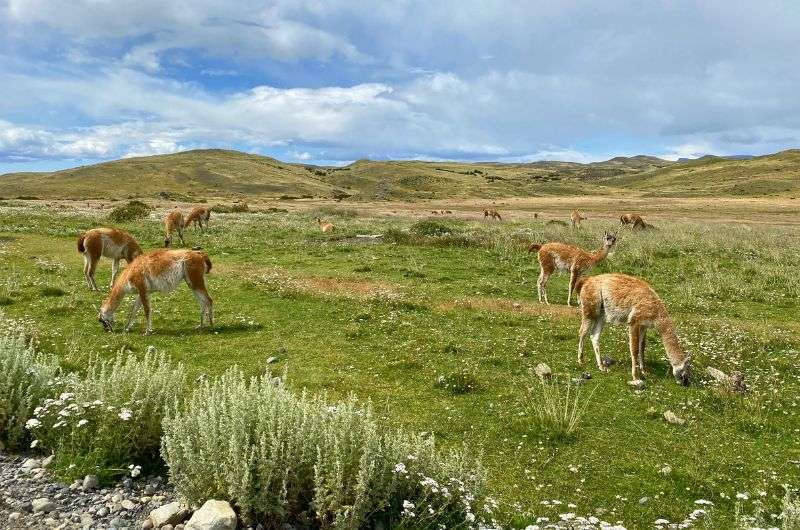
The grass is greener in Torres del Paine. These alpacas know it
5. Torres del Paine tickets have to be bought online
Tickets to Torres del Paine must be bought online on CONAF’s official website. Your QR code will be checked at the park’s entrance gates, sometimes along with your passport. Tickets cannot be bought there in person and there is limited to no internet in the national park, so make sure to download your tickets and have them ready on your phone before arrival.
6. How many days do you need in Torres del Paine?
To fully experience the highlights and all activities in Torres del Paine, plan for at least 3–5 days. This gives you enough time to explore the iconic day hikes, like the Base Las Torres trek, and take part in other activities like kayaking or a boat excursion to Grey Glacier. If you're doing multi-day treks like the W Circuit, 7 days is more realistic.
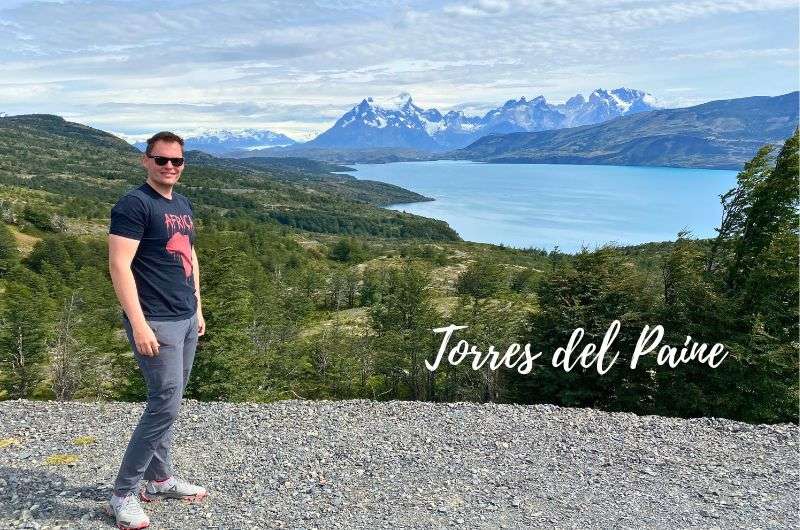
Plan at least 5 days for Torres del Paine
Tip: For a sample 3-day Torres del Paine itinerary, read my Torres del Paine Hiking + Activities Guide.
- Do you need a tour guide for Torres del Paine?
You don’t need a tour guide if you’re an experienced hiker or only doing day hikes in Torres del Paine, as most trails are well-marked and you’ll seldom be on the paths alone. We did our entire Torres del Paine trip as self-guided, even renting a car to get around comfortably. However, if you’re completely new to hiking or are visiting in the winter months, hiring a guide is a good idea.
8. Where to get a good Torres del Paine map?
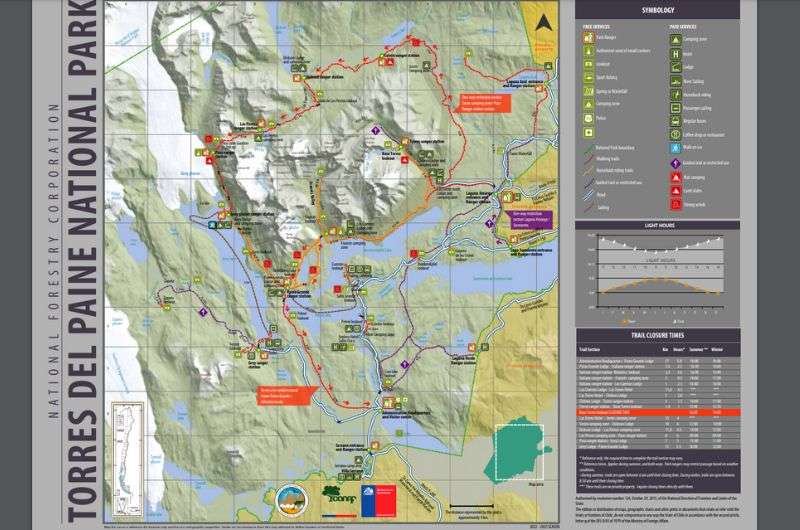
CONF map of Torres del Paine National Park, planning a trip to Torres del Paine
You’ll get a map at the national park gate when you get your tickets checked. You can download the above map on the CONF (National Forest Corporation) website in both Spanish and English. It shows the locations of ranger’s stations where your tickets will be checked, roads, viewpoints, and main hiking trails including time estimates.
9. Is it better to stay in Puerto Natales or Torres del Paine?
Staying in Puerto Natales is often the more practical choice for most visitors. The town has ATMs, grocery stores, and plenty of restaurants, which is a big plus when you want a break from trail food and a proper meal after a long day of hiking. I stayed there myself, and it was great for stocking up on supplies before heading into the park. It's also the hub for buses and tours heading into Torres del Paine, making it the most convenient base.
10. Where to stay in Puerto Natales? Hotel Vendaval
If you're looking for a perfectly located hotel in Puerto Natales, Hotel Vendaval is spot-on. You’re within walking distance of everything—shops, restaurants, and only a 15-minute stroll to the bus station for Torres del Paine if you're not driving. The rooms are modern, super clean, and yeah, they're small, but who cares? You’ll be out exploring all day anyway. The king-size bed is ridiculously comfy, and the staff couldn’t be friendlier. Plus, the rooftop bar is a nice touch—quiet, with sunset views of the mountains, and a free welcome drink. The breakfast is decent, though the options are a bit limited.

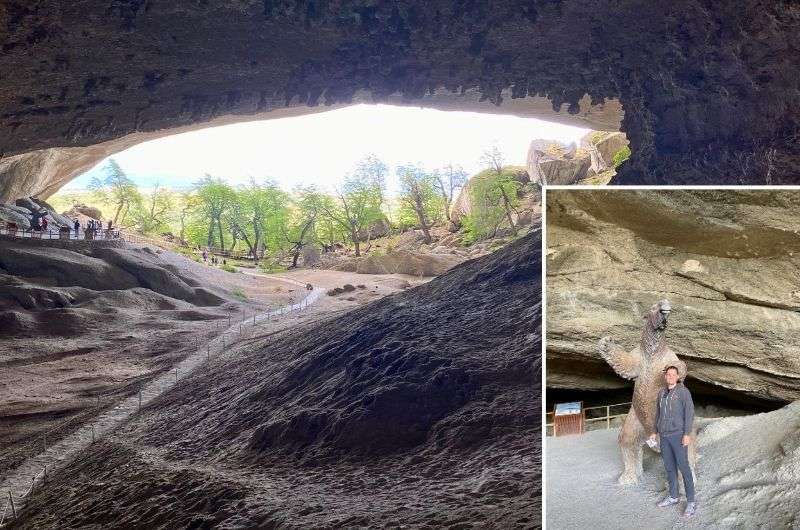
While you're in Puerto Natales, you might manage to get a photo with a bear in the Milodón Cave
11. How do you get to Torres del Paine from Puerto Natales?
Puerto Natales is 80 km (50 mi) to Torres del Paine NP, and it’s easy to travel between the two in a rental car (which I recommend) or using a bus. Buses leave from Puerto Natales bus terminal several times every morning around 7 am and then a couple more times around midday. They are large, comfortable buses (if a bus can be comfortable!). Bus tickets cost around USD 15.
Bus Sur is the main bus company that travels the route between Puerto Natales and Torres del Paine and makes the following stops: Laguna Amarga, Pudeto, camping Pehoe, Parque Administración, and Hotel Lago Grey, in that order.
Or, like us, you can rent a car and be the master of your own fate. It’s much faster and more convenient to drive, but the buses get the job done too, I suppose.
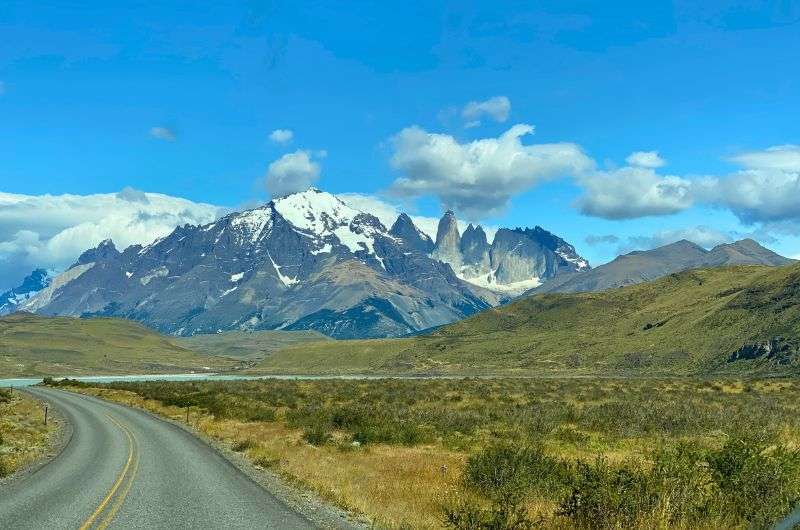
The roads start out nice and paved, and then they turn into gravel the further inside the national park you go
12. How long is the bus from Torres del Paine to Puerto Natales?
Buses take 2–4 hours to get between Puerto Natales and Torres del Paine depending on which part of the park you get off in. If you want to get to the Torres del Paine Welcoming Center (a central section where the classic Mirador Torres del Paine day hike departs from), you’ll need to get off at the Laguna Amarga park entrance (a 2-hour trip from Puerto Natales) and then take a shuttle bus to the Welcoming Center from there which another 15 minutes.
13. Is it easy to drive from Puerto Natales to Torres del Paine?
Yes, driving from Puerto Natales to Torres del Paine is pretty straightforward. The roads are well-signposted, and you’ll find the route easy to follow. As you get deeper into the park, the roads become less sealed and turn to gravel, so expect a slower drive, but hey, it's all part of the adventure! Plus, the views along the way make up for it. If you're heading to the parking lot at the Welcoming Center, you’ll need to stop at the Laguna Amarga park entrance first to get your tickets checked.
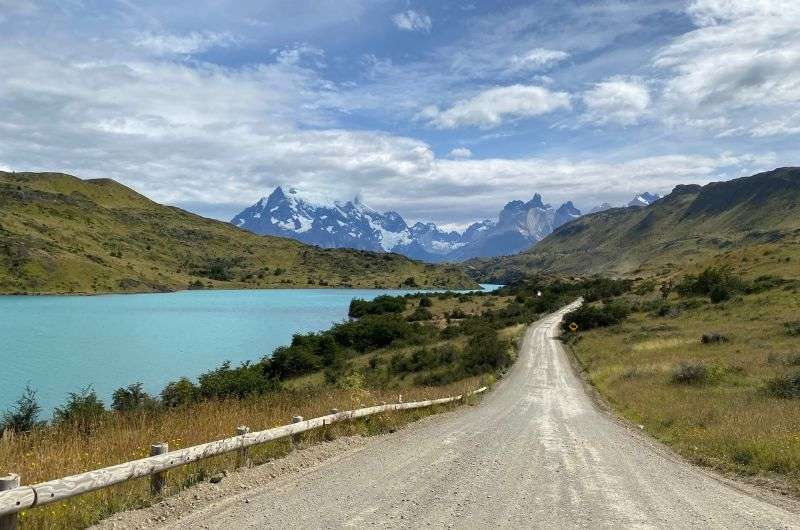
Torres del Paine is easily accessible by car
14. Where is the entrance to Torres del Paine National Park?
The most popular entrance to the Torres del Paine National Park is at Laguna Amarga (see the official park entrance on Google Maps), 114 km (70 mi) from Puerto Natales. This entrance is closest to the Torres del Paine Welcoming Center, which is where you’ll start your day hike to the Mirador Torres Del Paine (or go on other trails, like the W or O circuits).
Other entrances to Torres del Paine are:
- Sarmiento entrance: 112 km/70 mi from Puerto Natales
- Serrano entrance: 80 km/50 mi from Puerto Natales
15. How to get to Torres del Paine from El Calafate
To get to El Calafate (the gateway to Los Glaciares NP in Argentina) from Torres del Paine, you can drive or take a bus from Puerto Natales. The drive takes around 4–5 hours, including a border crossing. It's essential to have the proper paperwork and insurance if you're renting a car, as border crossings can be tricky and require extra fees. There aren’t many rental car companies that will let you take your rental car across the border, so do your research in advance.
Make sure to fuel up when you can since gas stations are scarce along the way. The route includes a mix of paved and gravel roads, and you have to be prepared for some rough, rocky patches.
Buses also run regularly between El Calafate and Puerto Natales, from where you can catch a transfer to the park.
Tip: I wrote a detailed travel guide and trip itinerary for Los Glaciares including El Chaltén. It would be a wicked combo to do both Patagonia hotspots in one trip!

16. How to get to Torres del Paine from Santiago?
To get to Torres del Paine from Santiago, the easiest way is to fly from Santiago to Punta Arenas (around 3.5 hours direct flight). There are multiple daily direct flights available. From Punta Arenas, take a bus or rent a car for the 3–4-hour drive to Puerto Natales, the gateway town to the park. From Puerto Natales, it’s about 1.5-2 hours by bus or car to reach the park entrance—I’ve described that in detail above. Alternatively, during the summer, you can find seasonal flights from Santiago to Puerto Natales for a quicker connection and just bypass Punta Arenas altogether.
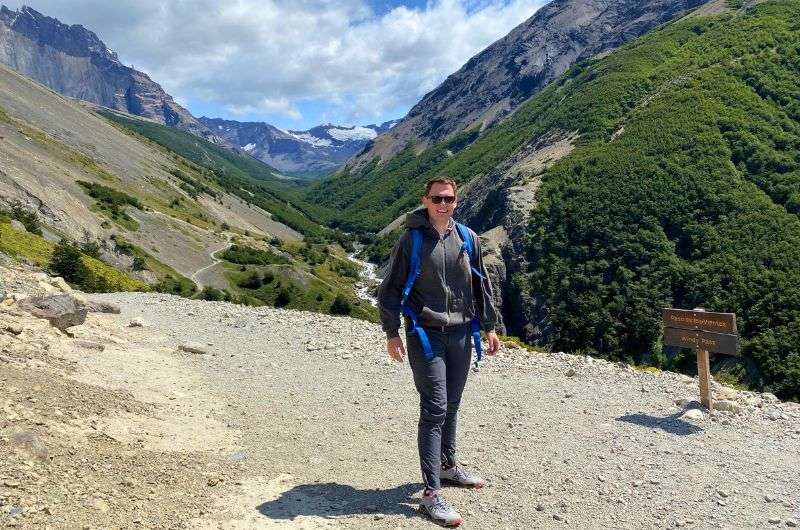
From November to February it is pleasant in Torres del Paine
17. The best time to visit Torres del Paine is November to February
The best time to visit Torres del Paine is November to February; you could even go in March, but you’d need to hope that rainy season won’t kick in too soon. The rainiest months are March and April. Patagonia is also notorious for and extremely proud of its strong wind. Ironically, the windiest months in Patagonia are in November–January, aka the peak tourist months. If you want less crowds, a month or two outside the main tourist season will do the trick—just expect colder and less stable weather.
Every single guide tells you that it’s mostly windy and rainy all the time in Torres del Paine, so we mentally prepared to look like Leo di Caprio in Revenant after a few hours of hiking, but that didn’t happen. Lovely sunny days with only a mild breeze do exist in Torres del Paine!
Chile lies in the southern hemisphere, meaning the seasons are the exact opposite of those in Europe or the US. The most popular tourist months (November to February) are summer in Chile, which translates to longer days, better hiking conditions, and more stable weather (by Patagonia standards, anyway).
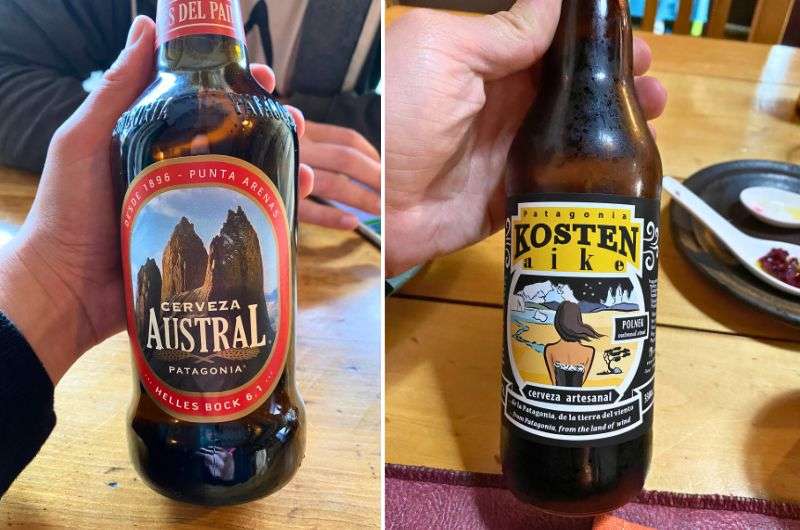
Even the beer (on the right) shows how windy it is in Torres del Paine!
18. Torres del Paine summer temperatures are mild
In Torres del Paine’s main tourist season, daytime highs can reach 15–20°C (59–68°F), but don’t let that fool you—Patagonia is famous for its mood swings. Expect mornings and evenings around 5-10°C (41-50°F), with sudden drops due to strong winds. Always pack layers, because while the sun may warm you up at midday, cold gusts and rain can sneak up at any moment.
19. What to pack for Torres del Paine? Everything!
Since you can go from summer to winter and back again all within a day in Torres del Paine, you can never really predict exactly what the weather’s going to be like when you are out there. I strongly suggest packing for every occasion.
Must-have’s: Waterproof jacket, thermal underwear, gloves, hat, sunscreen, sunglasses, and lip balm. It may sound funny, but lip balm and sunscreen saved my life in the Patagonia mountains!
20. What is the most popular trail in Torres del Paine?
The most popular trail in Torres del Paine is the Base of the Towers (Mirador Base Las Torres) day-long hike. This challenging trek is about 20 km (12 miles) round trip and takes 7–9 hours to complete. It is spectacular, even though I found the first section pretty blah. Ultimately, it offers iconic views of the park’s granite spires, the Torres del Paine, over the lagoon at the end. This hike is the easternmost leg of the famous multiday hike, the W Circuit.
Honorable Mention: The W Circuit and O Circuit are on many hikers’ bucket lists, but I like to stick to day-long adventures, so I can’t speak from experience about them.
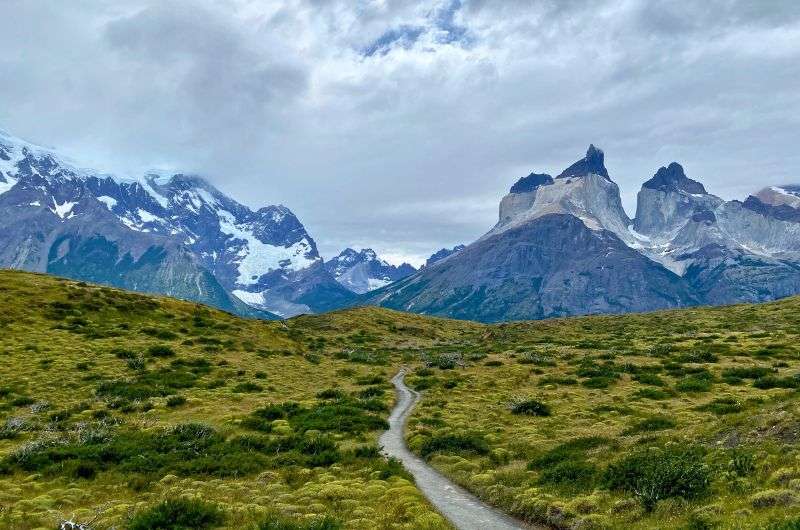
The Cuernos Lookout was one of my favorites
My favorite day hikes in Torres del Paine:
- Base Las Torres: The iconic trek to the famous granite towers, a must-do for any first-timer in Torres del Paine. A challenging but rewarding day hike with unforgettable views at the top.
- Condor Lookout: A shorter but rewarding hike with sweeping panoramic views of the park. From the top, you can see the vast expanse of Patagonia, including the Paine Massif and the surrounding lakes.
- Cuernos Lookout: Another easier, more relaxed hike that doesn’t skimp on scenery. You’ll wander through fields of wildflowers and along the shores of Lake Nordenskjöld, with the Cuernos del Paine’s jagged peaks towering in the background. The trail also gives you a front-row seat to the dramatic Salto Grande waterfall.
For a detailed breakdown of these hikes, including practical info for the W Circuit and O Circuit, check out my full article: Torres del Paine Hiking and Adventure Activities.
21. Can you see Torres del Paine without hiking?
Torres del Paine offers plenty of ways to soak in its stunning landscapes even if hiking isn’t your thing. One of the best ways is by taking a boat excursion or kayaking trip to Grey Glacier. You'll cruise across Lago Grey, getting up-close views of the massive glacier and the surrounding mountains, all without stepping foot on a trail.
Another option is visiting the Torres del Paine Welcome Center, where you can learn more about the park’s history, geology, and wildlife. It’s a great spot to soak in the scenery, and there are shorter, flat walks nearby if you feel like a light stroll.
Lastly, you can enjoy scenic drives throughout the park, stopping at various lookouts for panoramic views of the Cuernos del Paine, Lago Nordenskjöld, and the Paine Massif. So, yes, you can still get all the iconic views without the uphill struggle!
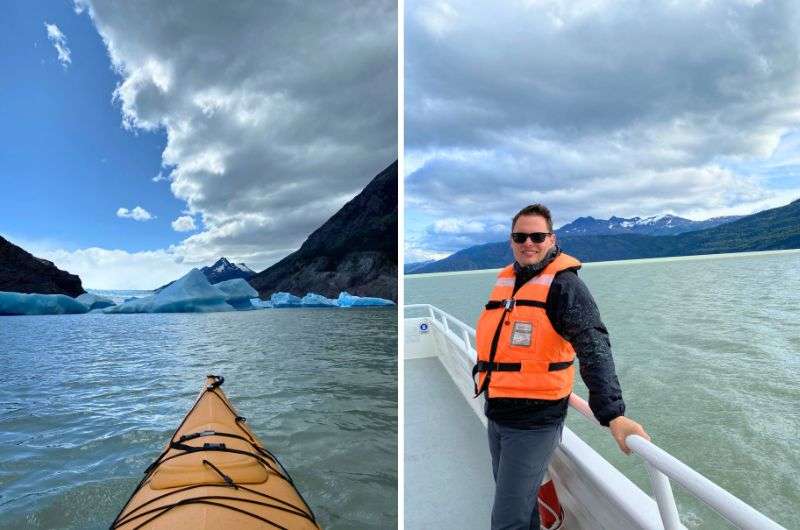
If you don't want to hike, you can try kayaking to Grey Glacier or take a totally relaxing boat ride to the glacier
Sometimes, all you need to do is take the first step... I've filtered out the best hotels in Chile for you
Save it for yourself to come back to later, or share with your friends on social media!
This post may contain affiliate links. We earn a small commission if you make bookings through my links, at no additional cost to you. This helps us keep this blog free, thank you!










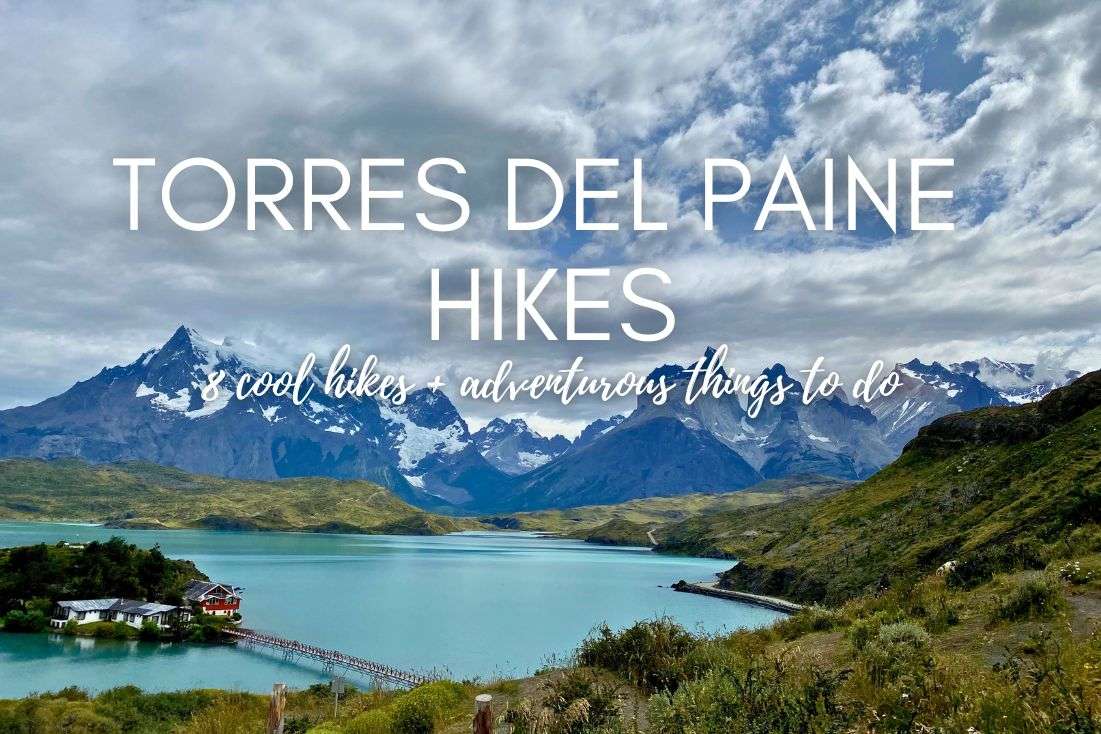

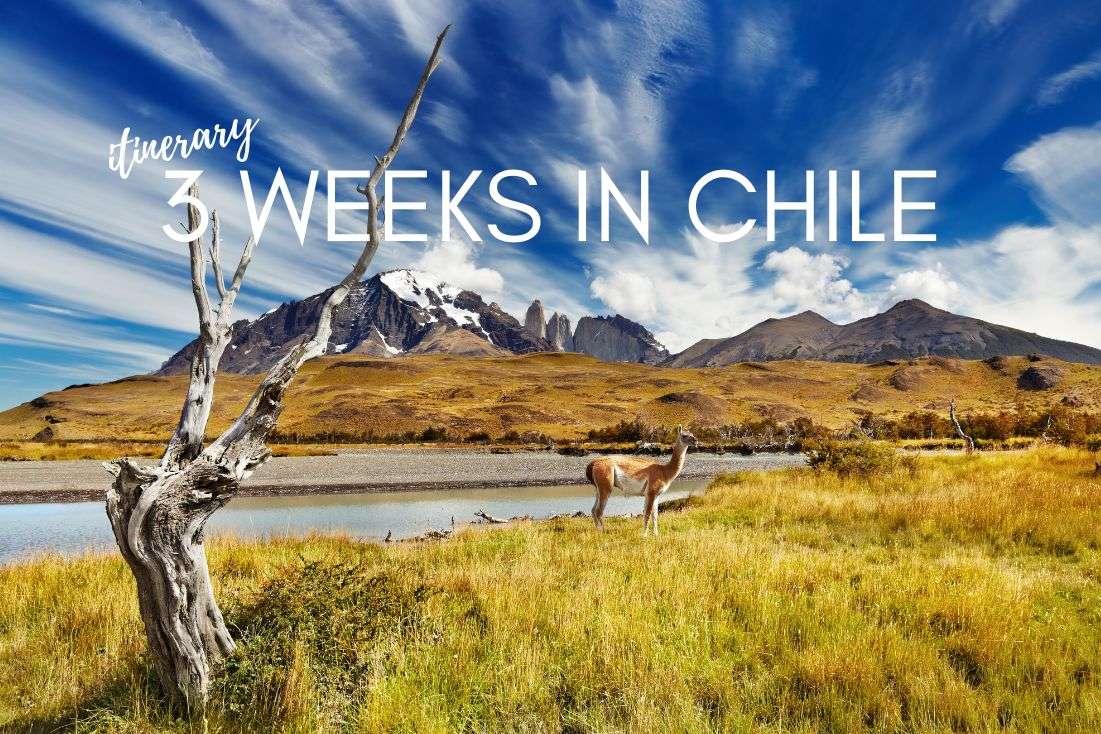



Comments | Thoughts? Give us a shout!